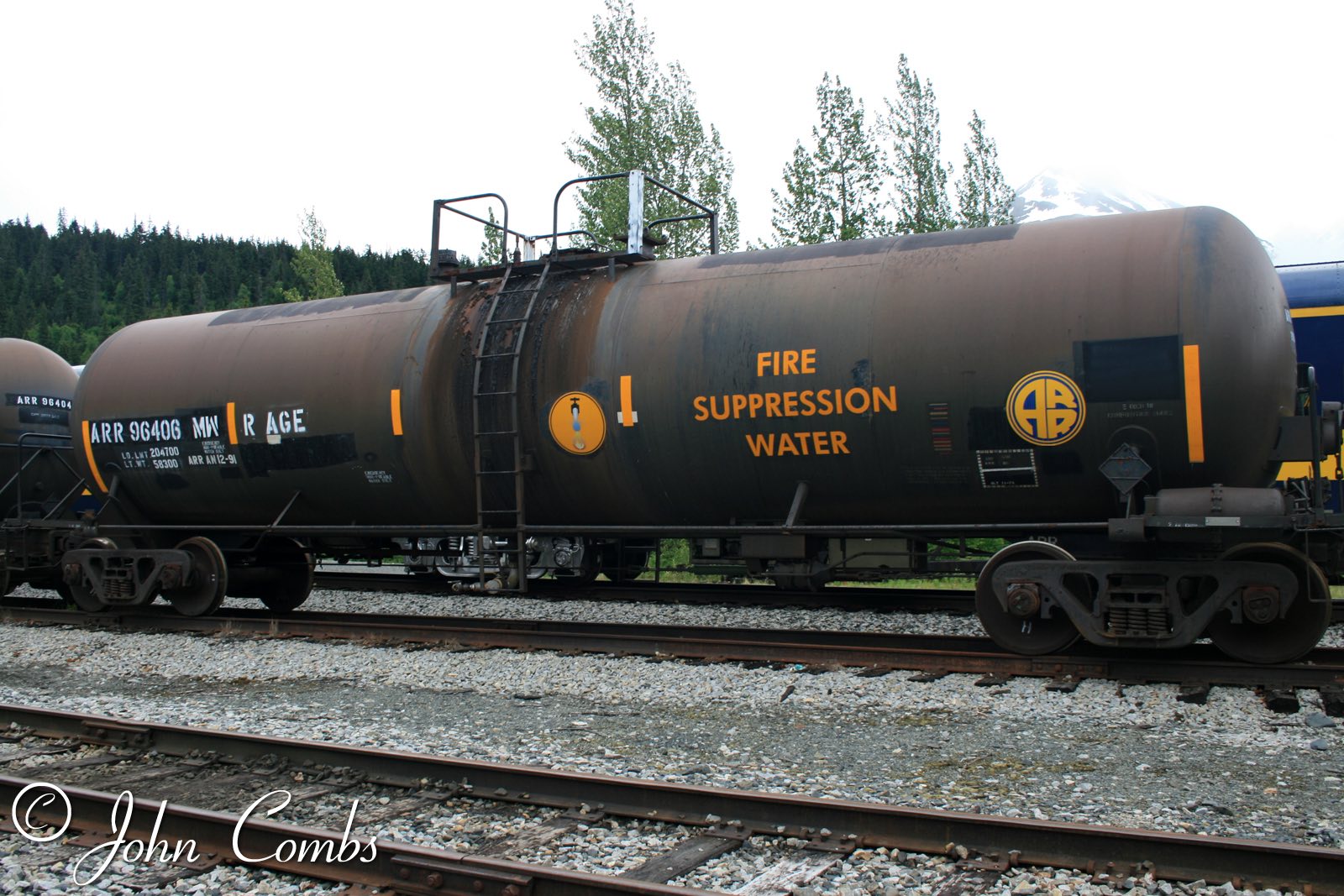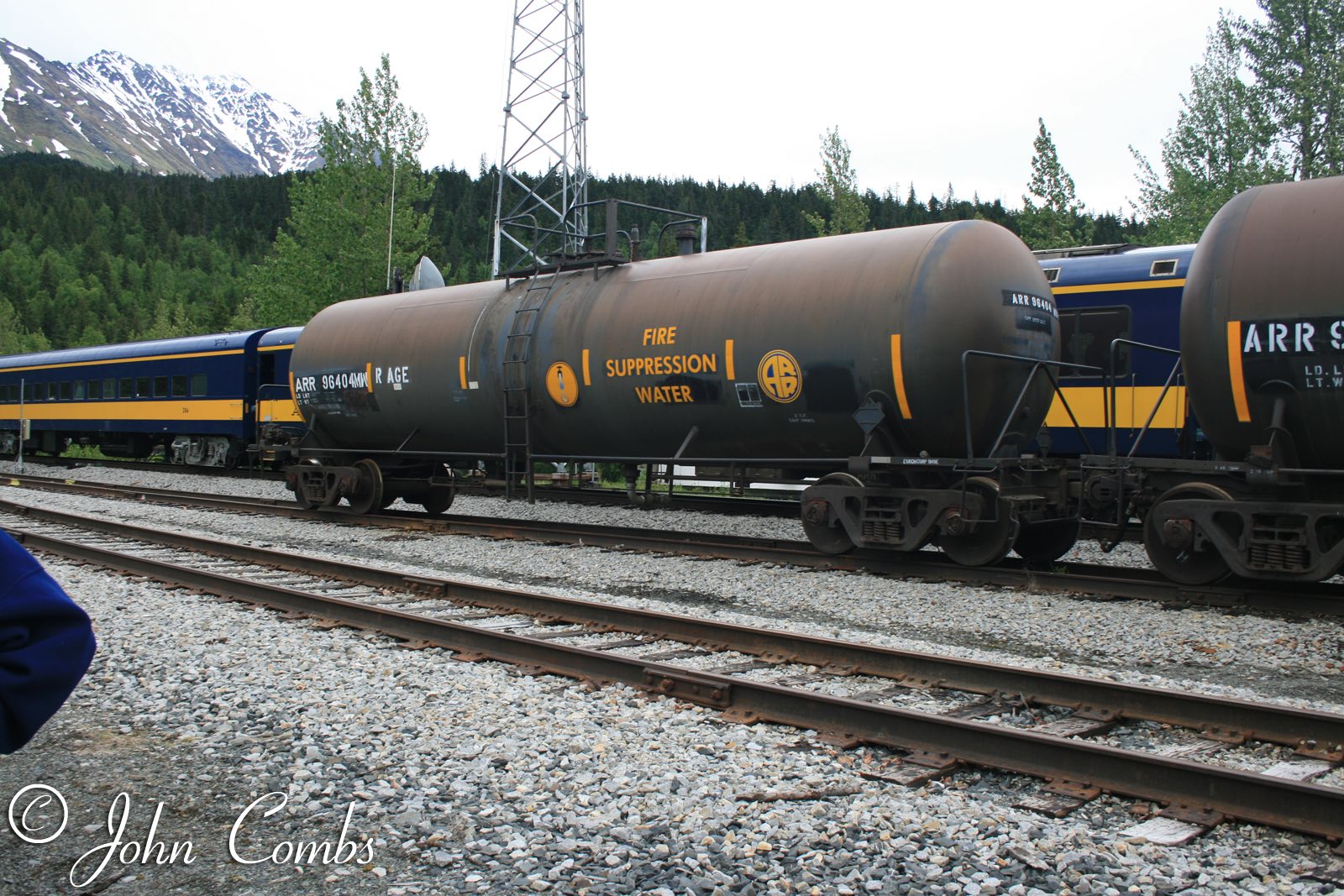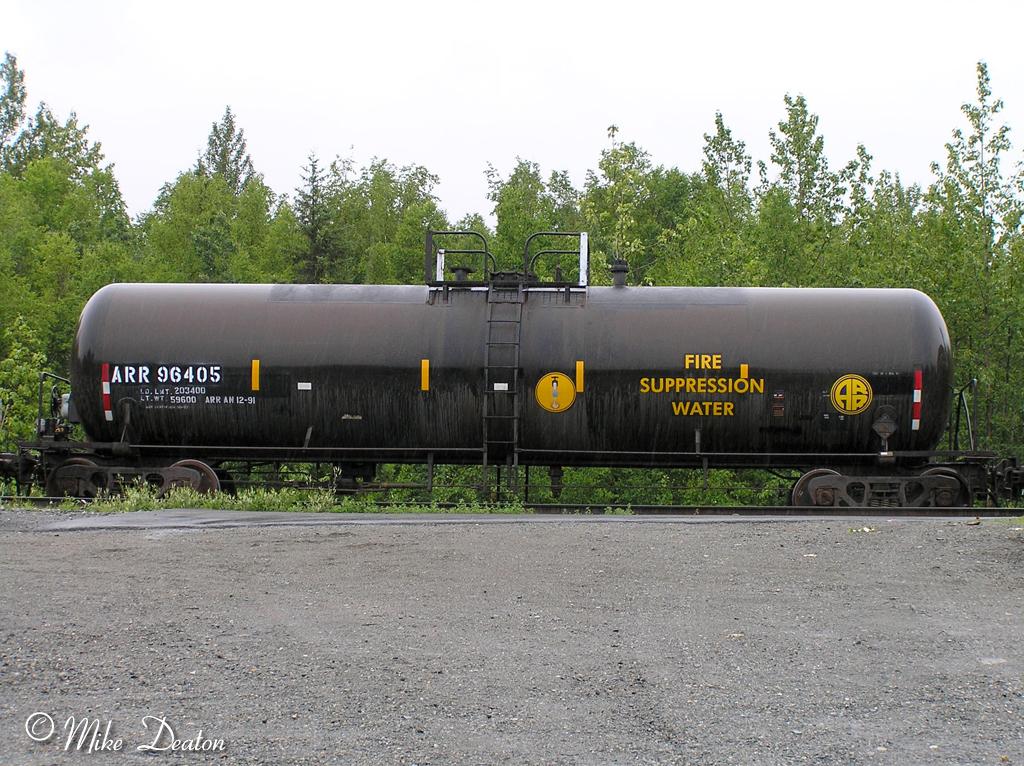Photographs courtesy of John Combs Alaska Railroad Corporation Community Ties 1st Quarter, 2008 As springtime draws closer, so does the risk of wild land fires. The Alaska Railroad is doing more than ever to address the dangers posed by fires along the track. On the fire prevention side, ARRC locomotives are outfitted with the latest design in exhaust spark arresters approved by the U.S. Forest Service. On the response side, the ARRC track crews are equipped with water jugs and sprayers to suppress small fires. However, if a fire grows, they turn to the professionals within the Alaska Department of Natural Resources (ADNR). It is at this juncture where the railroad has made the most progress — boosting professional-led fire fighting efforts. ARRC is close to finalizing a letter of agreement with ADNR’s Division of Forestry to provide reciprocal assistance in the event of a fire along the rail line. As part of the agreement, ARRC recently converted nine 20,000-gallon tank railcars to hold water. These will be deployed in pairs to five strategic locations along the rail line. No longer federally qualified to haul petroleum, these aging tank cars were to be sold to the scrap yard. But after second thought, the cars were thoroughly cleaned, donated for water use only, and clearly marked to underscore their role in fire suppression. In addition to boosting fire-fighting capability with on-site water sources, the railroad has been collecting information to help gauge the potential severity of future fires. Last summer, ARRC inventoried the track from Anchorage to Fairbanks, taking note of fire-related conditions, mile-by-mile. This summer the inventory will cover Anchorage to Seward. Fire risk is the product of fuel types, fuel density and seasonal conditions. For example, spruce trees are extremely flammable, and a patch of spruce growing closely together might identify an area as high risk for becoming a conduit to spread wildfire. And periods of warm, dry, windy weather can turn a normally low-risk area into a potential tinderbox. Such fire-related information is being incorporated into ARRC’s Track Chart. This booklet illustrates the track structure, milepost locations, and geographical features along the railroad’s main line and branch lines. Soon, it will become the latest in the Alaska Railroad’s growing arsenal of tools to combat fire along the track.
|



